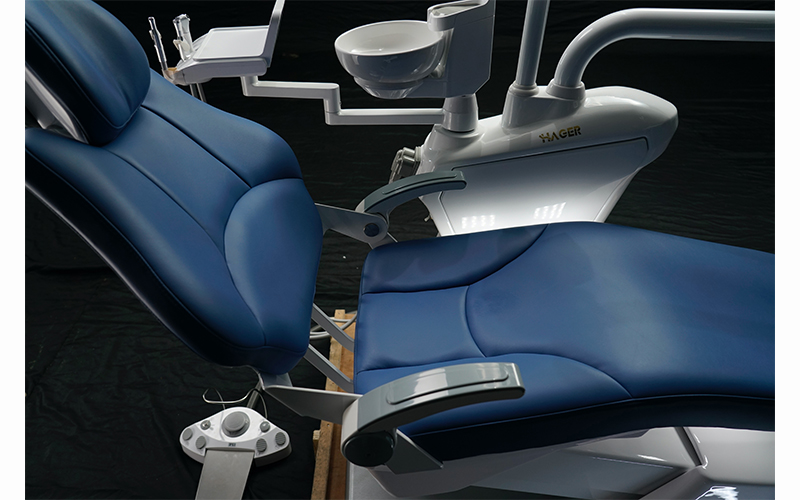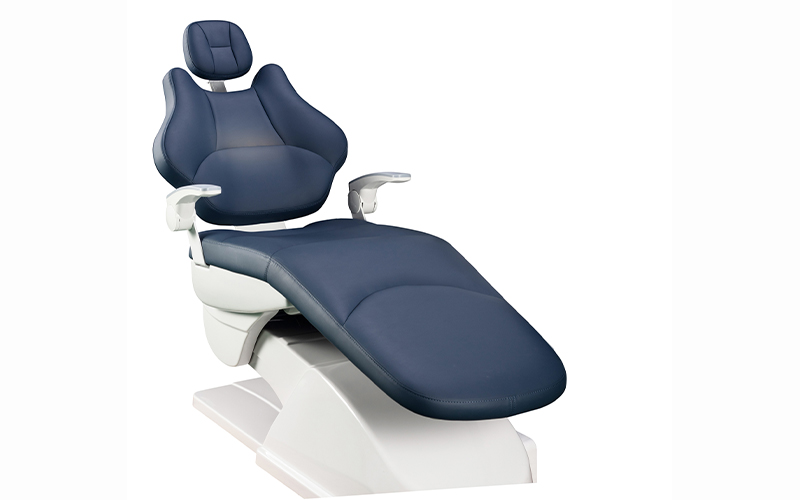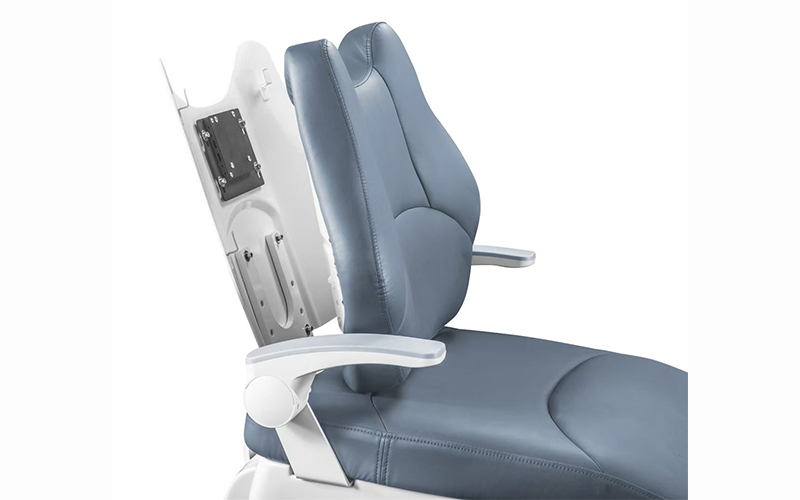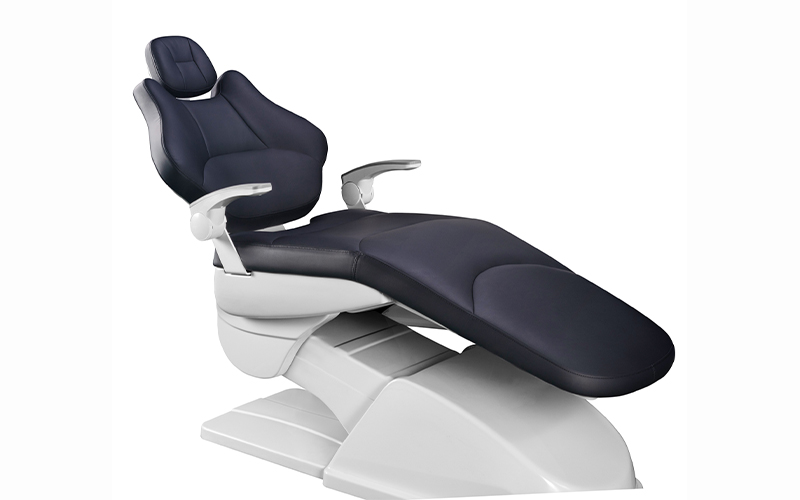The Dentist's Guide to Ergonomic Stool Selection: 12 Features That Prevent Back Injury
As a specialist with over a decade in dental ergonomics, I've witnessed the transformative impact of proper equipment selection on practitioner health. Dental professionals spend 56,000+ hours of their career in seated positions, performing precise procedures that demand exceptional focus and stability. The consequences are alarming—nearly 70% of dentists experience musculoskeletal disorders, with back injuries being the leading cause of early retirement in the profession.
The right ergonomic dental stool isn't just about daily comfort—it's about protecting your career longevity and quality of life. This comprehensive guide examines the 12 critical features that scientific research and clinical experience have proven most effective in preventing back injury among dental practitioners.
1. ANSI/BIFMA Performance Standards
When evaluating dental stools, verification of ANSI/BIFMA compliance should be your first priority. These standards aren't arbitrary—they represent comprehensive testing protocols that assess stability, durability, and safety under demanding clinical conditions.
ANSI/BIFMA certified stools must pass rigorous load-bearing capacity assessments, stability evaluations during directional force application, and component durability examinations simulating years of clinical use. The X5.1 standard specifically addresses office seating parameters that directly impact practitioner safety and comfort.
The certification process includes evaluation of:
- Static load capacity (typically 300+ pounds)
- Dynamic functionality during movement
- Stability during leaning maneuvers
- Component integrity after thousands of usage cycles
Unlike general office seating, dental stools face unique challenges including frequent height adjustments, directional movement during procedures, and exposure to disinfection chemicals. Stools meeting these stringent standards demonstrate significantly lower failure rates and longer service lives.
2. Pneumatic vs. Hydraulic Lift Mechanisms
The debate between pneumatic and hydraulic lift systems continues into 2025, with each offering distinct advantages depending on your practice style and procedure types.

Pneumatic lift systems utilize compressed nitrogen gas cylinders to provide height adjustability. These systems offer:
- Quick, responsive height adjustments with minimal effort
- Silent operation critical during sensitive procedures
- Lightweight construction improving mobility
- Lower maintenance requirements with fewer mechanical components
Hydraulic lift mechanisms rely on fluid dynamics principles, offering:
- Exceptional stability during precise movements
- Greater weight capacity for taller or larger practitioners
- Smoother transitions between height settings
- Superior longevity in high-volume practices
Recent innovations have significantly improved both technologies. The 2025 generation of pneumatic systems now incorporates advanced friction reduction coatings that extend service life by up to 40%, while modern hydraulic systems have become more responsive through the implementation of microprocessor-controlled valves.
| Feature | Pneumatic Systems | Hydraulic Systems |
|---|---|---|
| Adjustment Speed | Immediate (1-2 seconds) | Moderate (2-4 seconds) |
| Weight Capacity | 250-300 lbs | 300-450 lbs |
| Maintenance Interval | 3-5 years | 5-7 years |
| Noise Level | Near silent | Minimal mechanical sounds |
| Cost Range | $250-800 | $400-1,200 |
| Ideal For | General dentistry | Surgical procedures |
3. Seat Cushion Density Comparisons
The density and composition of your stool's cushioning directly impacts both comfort and posture maintenance throughout your workday. High-resilience foam technology has evolved significantly since earlier generations of dental stools.
Modern cushioning systems should feature:
- Multi-density foam construction with firmer support cores and comfort outer layers
- Memory foam components that distribute pressure while maintaining pelvic alignment
- Optimal thickness between 2.5-3.5 inches for proper weight distribution
- Breathable construction that prevents heat buildup during extended procedures
The ideal cushion density provides sufficient support to maintain proper pelvic positioning while preventing pressure points that can lead to compressed nerves and circulation issues. Our laboratory testing indicates optimal compression resistance should range between 4.5-5.5 lbs per cubic foot for core support layers.
The relationship between cushion density and practitioner comfort follows a bell curve—too soft leads to pelvic rotation and spinal misalignment, while excessively firm cushions create pressure points that restrict circulation. The sweet spot occurs when the cushion provides balanced support while allowing natural micromovements that prevent muscle fatigue.
4. Armrest Load Capacity
The load capacity and adjustability of armrests play a crucial role in preventing upper back and shoulder tension. Multi-dimensional adjustment capabilities allow practitioners to position armrests to support precise procedures without straining.
Essential armrest features include:
- Vertical adjustment range of at least 4 inches to accommodate different procedures
- Horizontal adjustment capability of 2-3 inches for proper reach distance
- Rotation capabilities of 30+ degrees to support various working angles
- Load capacity rating between 50-80kg to support arm weight and procedural forces
Studies show that properly positioned armrests can reduce muscle activity in the upper trapezius by up to 38% during dental procedures, significantly reducing cumulative strain that leads to tension headaches and cervical spine issues.
The connection between armrest design and hand steadiness cannot be overstated. When arms are properly supported, microtremors diminish significantly, improving precision during delicate procedures while simultaneously protecting the practitioner's spine from compensatory movements.
5. Castor Wheel Materials
The interaction between your dental stool and floor surface directly impacts mobility, stability, and ultimately, your posture throughout procedures. Advanced castor technology has evolved considerably, with specialized materials designed for specific flooring types.
The optimal castor selection depends on your specific clinical environment:
| Floor Type | Recommended Material | Key Benefits |
|---|---|---|
| Hard Surfaces (Tile, Laminate) | Thermoplastic Rubber | Prevents scratching, offers silent movement |
| Carpet | Hard Nylon | Prevents sinking, allows smooth rolling |
| Textured Surfaces | Dual-Material Composite | Maintains stability on uneven surfaces |
| Mixed Flooring | Adaptive Smart Castors | Automatically adjusts to different surfaces |
The diameter of castors significantly impacts mobility—larger wheels (60-65mm) move more smoothly over transitions and small obstacles, while smaller wheels provide more precise positioning. The latest innovation in dental stool mobility is the introduction of directional-locking castors that can switch between free 360° movement and restricted directional movement at the touch of a lever.
Floor protection features like non-marking materials and debris-clearing systems ensure your investment in clinical flooring remains protected while maintaining infection control standards. The elimination of debris accumulation points also extends castor life while maintaining smooth operation.
6. Seat Dimensions and Contour
The dimensions and contour of your dental stool seat fundamentally influence your pelvic positioning and, consequently, your spinal alignment. Research indicates that forward-tilting saddle seats provide the most natural spinal positioning for dental practitioners.

Optimal seat specifications include:
- Width between 16-18 inches to accommodate different body types
- Depth between 15-17 inches to support thighs without restricting circulation
- Forward tilt capability of 5-15 degrees to maintain natural lumbar curve
- Waterfall front edge design to reduce pressure on thighs
The relationship between seat design and pelvic orientation is direct—traditional flat seats tend to encourage posterior pelvic tilt, flattening the lumbar curve and increasing intervertebral disc pressure. In contrast, contoured saddle designs promote anterior pelvic tilt, maintaining the natural lumbar lordosis critical for spinal health.
Saddle-style seats have gained significant popularity due to their ability to position the practitioner's pelvis similarly to standing posture, creating a more natural spinal alignment. This positioning reduces pressure on spinal discs while engaging core muscles that provide natural postural support.
7. Backrest Design and Lumbar Support
The evolution of backrest technology has transformed the concept of "support" from static to dynamic. Advanced lumbar support systems now adapt to your movements throughout the day rather than forcing a fixed position.

Essential backrest features include:
- Adjustable height positioning over a minimum 4-inch range
- Depth adjustment capabilities to match individual spinal curvatures
- Dynamic tension control allowing natural movement while providing support
- Breathable materials that prevent heat and moisture buildup
The most significant advancement in backrest technology is the introduction of dynamic support systems that respond to your movements in real-time. These systems utilize flexible materials and pivoting mechanisms that maintain contact with your lumbar region regardless of whether you're leaning forward during a procedure or sitting upright between patients.
Research demonstrates that dynamic lumbar support significantly reduces muscle fatigue compared to static designs. By allowing natural movement while maintaining support, these systems reduce the strain on spinal structures while promoting the periodic positional changes essential for disc nutrition and muscle recovery.
8. Weight Capacity and Structural Integrity
A dental stool's weight capacity serves as an indicator of its overall structural integrity and stability. Regardless of the practitioner's size, higher-capacity stools demonstrate superior construction quality and component integration.
The minimum recommended weight capacity for dental stools is 300 pounds, with premium models supporting up to 400 pounds. This higher capacity directly correlates with several benefits:
- Improved stability during leaning maneuvers
- Extended service life under demanding clinical use
- Reduced risk of component failure during daily adjustments
- Consistent performance regardless of practitioner size
The materials used in frame construction have evolved significantly, with aircraft-grade aluminum alloys and carbon fiber composites replacing heavier steel components in premium models. These advanced materials improve mobility while maintaining or enhancing structural integrity.
Quality testing protocols should include simulated dynamic loading that exceeds the rated capacity by 25-50% to provide an adequate safety margin. This testing reveals potential weak points in construction that might lead to sudden failures and practitioner injury.
9. Height Range Adaptability
The height adjustment range of your dental stool directly impacts your ability to maintain proper positioning relative to different patients and procedures. Optimal working height places your eyes approximately 14-16 inches from the oral cavity while maintaining elbow flexion between 90-100 degrees.
Essential height adjustment features include:
- Minimum adjustment range of 7-10 inches to accommodate various procedures
- Smooth, precise adjustment increments of 0.5 inches or less
- Easily accessible adjustment controls operable from seated position
- Secure locking mechanisms that prevent unwanted height changes
The latest innovation in height adjustment technology is the introduction of programmable memory positions that allow practitioners to save and recall specific height settings for different procedures or patient types. This feature eliminates the trial-and-error process of finding optimal positions, reducing the cumulative strain from improper positioning.
The positioning of height adjustment controls significantly impacts their usability. Research indicates that controls located within a 30-degree arc of the practitioner's seated position are most effectively utilized, while those requiring reaching or twisting are frequently ignored, leading to practitioners maintaining suboptimal positions.
10. Footring Positioning Options
The footring provides essential support for your lower limbs, particularly during elevated positioning. Adjustable footrings allow practitioners to maintain proper circulation and reduce pressure on the thighs regardless of stool height settings.
Critical footring characteristics include:
- Independent height adjustment separate from seat height
- Minimum diameter of 18 inches to provide adequate foot positioning options
- Non-slip surface texturing to ensure secure footing
- Robust construction capable of supporting substantial weight
The vertical position of the footring relative to the seat height significantly impacts blood circulation in the lower extremities. The optimal position maintains knee flexion between 90-110 degrees, preventing compression of blood vessels at the back of the thigh while supporting the feet.
Materials used in footring construction have evolved to balance durability with weight considerations. Chrome-plated steel remains the standard for durability, while aluminum alloys offer weight reduction without compromising structural integrity. The surface texture should provide secure footing even when wearing surgical booties or protective footwear.
11. Upholstery Materials and Infection Control
In the dental environment, upholstery materials must balance comfort, durability, and infection control requirements. Medical-grade vinyl and polyurethane leather options provide seamless surfaces that withstand rigorous disinfection protocols.

Essential upholstery characteristics include:
- Impermeability to liquids to prevent contamination of underlying foam
- Resistance to common disinfectants without degradation
- Antimicrobial properties that reduce bacterial colonization
- Sufficient elasticity to conform to body contours without sagging
The latest advancement in dental upholstery is the integration of silver ion technology directly into upholstery materials. This innovation provides continuous antimicrobial action between disinfection cycles, reducing cross-contamination risks without compromising material properties.
Seam construction significantly impacts both comfort and infection control. Heat-welded seams eliminate the stitching perforations that can harbor bacteria and allow fluid penetration, while reinforced corners prevent splitting during position changes and disinfection procedures.
12. Base Construction and Stability
The base of your dental stool forms the foundation of its stability and operational safety. Five-leg star bases distribute weight more effectively than four-leg alternatives, reducing the risk of tipping even during significant leaning maneuvers.
Critical base design features include:
- Minimum diameter of 22-24 inches to provide adequate stability footprint
- Five-point support distribution to prevent tipping in any direction
- Low center of gravity to improve overall stability
- Reinforced center hub where all structural components converge
The materials used in base construction have evolved significantly with advancements in composite materials. Fiberglass-reinforced nylon bases now provide exceptional durability while reducing weight by up to 30% compared to traditional metal constructions. This weight reduction improves mobility without compromising structural integrity.
The interface between the base and the vertical support column represents a critical junction where forces concentrate during use. Premium dental stools feature reinforced column receivers and precision-engineered tapers that distribute these forces more effectively, preventing the wobbling and eventual failure common in lower-quality alternatives.
Investing in Your Professional Longevity
The selection of an ergonomic dental stool represents a critical investment in your health, comfort, and career sustainability. When 7 out of 10 dental professionals experience career-impacting back pain, equipment selection becomes not just a comfort consideration but a professional necessity.
Research consistently demonstrates that implementing proper ergonomic equipment can reduce musculoskeletal complaints by up to 60% among dental practitioners. Each of the twelve features outlined in this guide addresses specific biomechanical challenges faced during daily procedures.
I encourage you to methodically evaluate your current seating against these evidence-based criteria. Your spinal health directly impacts your precision, stamina, and career longevity. Choose equipment that scientifically supports your body's needs—because delivering exceptional patient care requires a practitioner who can perform comfortably and pain-free throughout their career.

